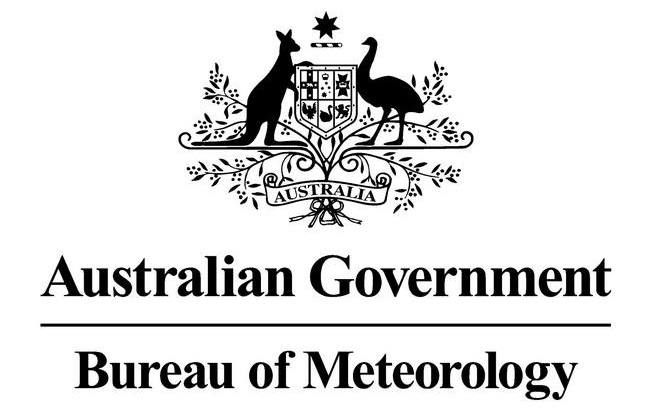The Bureau of Meteorology has released their State of Climate 2022 report. This gave a summary of Australia's climate during 2022 along with comparisons to historical data. Waterfind has prepared an overview of the key findings, and related issues for irrigators.
1. Temperature
- Since the Bureau’s national records began in 1910, on average, Australia has warmed by 1.47+ .24.
- The period between 2013-2020 ranks among the 10 warmest years, on record.
- The long-term warming trend means that now, the majority of years are warmer than almost any observed during the 20th century.
- An increase in extreme heat events associated with this warming has been observed across the entirety of Australia.
- Frequencies of extremely cold days and nights have declined across Australia.
- This does not apply to South-East and South-West Australia for extremely cold nights as these regions have seen significant cool season drying (hence, they experience more clear winter nights).
Increased evaporation (caused by increased temperatures) may change how irrigators manage their water supplies, in the long-term.
2. Rainfall
- Australian rainfall varies substantially and is strongly influenced by drivers such as El Nino, La Nina, the Indian Ocean Dipole and the Southern Annual Mode.
- Shift towards drier conditions across South-East and South-West Australia, with more frequent years of below-average rainfall, especially in cooler months (April – October).
- 15% decrease in cooler month rainfall in the South-West.
- In the same region, the period between May – July has seen the biggest decline of around 19%.
- Rainfall has increased across most of northern Australia since the 1970s.
- Rainfall in the cooler months is particularly important for Southern Australia – as it is the main growing season for dryland annual crops (e.g., wheat, barely, oats and canola).
- The declining trend in rainfall during this period is associated with a trend towards higher surface atmospheric pressure in the region and a shift in large-scale weather patterns, more highs, fewer lows and a reduction in the number of cold fronts that produce rainfall.
- In the past decade, there has been a trend towards lower rainfall throughout Southern Queensland.
- Cool season rainfall is generally more effective than warm-season rainfall in generating runoff.
Due to increased rainfall, water allocations are near full capacity. As such, water prices are forecast to remain low for a third consecutive year. However, BOM has projected there is a likelihood Australia could encounter another El Nino event. Its drier and hotter conditions will likely increase water prices due to the reduction in the availability of water.
As an example, the weather impacts of the last El Nino event (2019) in Australia caused temporary prices in the southern connected market to reach heights in excess of $900 per ML.
2.1 Heavy Rainfall
- Observations have shown heavy rainfall events across Australia (which occur on timescales of < a day) are intensifying.
- Daily rainfall totals associated with thunderstorms have increased since 1979, particularly in the Northern Territory.
- Primarily due to an increase in the intensity of rainfall per storm.
- Conversely, the number of low-pressure systems that can bring sustained heavy rainfall to highly populated parts of southern Australia has declined in recent decades. Implications of this include – recharging water storages and water resource management.
3. Streamflow
- The observed long-term reduction in rainfall across many parts of southern Australia has led to reduced streamflow (although with substantial interannual variability).
- Murray Darling Basin:
- Since records started in 1910, over 60% of hydrologic reference stations (gauges of the long-term effects climate change has on streamflow) show a declining trend in streamflow.
- This trend is more severe in the Northern Basin (particularly in Namoi, Border Rivers, Condamine – Culgoa and Gwydir River catchments).
- Declining trends are also evident in the majority of the Southern Basin (particularly in Murrumbidgee, Lachlan, Goulburn and Loddon River catchments).
These declining trends may impact upon trading regulations and hence, the ease of transactions.
Due to the decline in streamflow, there may be a reduced amount of water in dams, which will limit overall water allocation.
Additionally, if streamflow in the Northern Basin decline, this will be felt in the Southern Basin.
4. Future Climate
- Continued warming (less extremely cool days and more extremely hot days).
- Additional decline in cool season rainfall across many regions of the South and East.
- Prolonged periods of drought, on average, in the South and East.
- Extended length of fire season for the South and East in addition to the number of dangerous fire weather days also increasing.
- More intense short-duration heavy rainfall events.
- Will trigger a complex mix of effects on streamflow, and associated floor and erosion risks.
- Increased risk of natural disasters from extreme weather, including ‘compound extremes’.
This implies that holding sufficient permanent entitlements to manage crops will become significantly more important due to the possibility of increased price volatility in the temporary market.
You can read the full Bureau of Meteorology's Report here.




